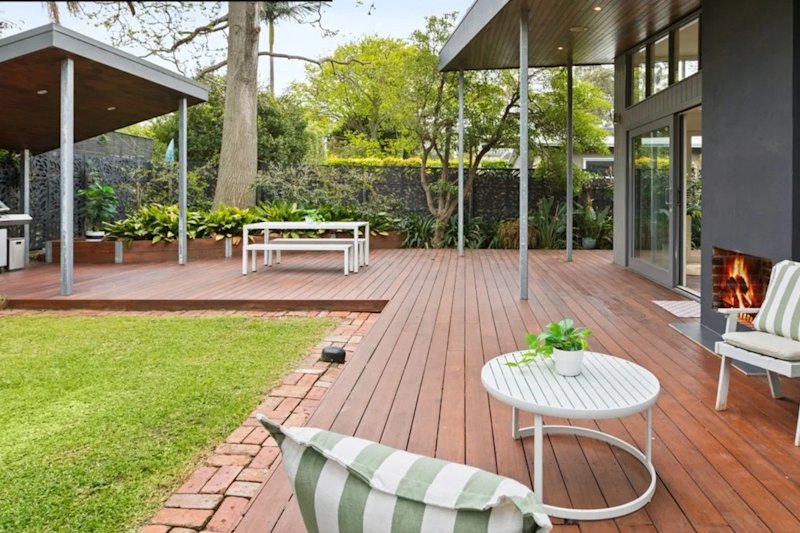Give your bedroom a 'sleep makeover' for a better night's sleep

Can’t sleep? Perhaps it’s your bedroom. And the solution might be as simple as swapping those sheer curtains for some heavy light-blocking drapes.
Regular insomnia plagues 13 to 33 per cent (up to a third) of Australians according to the Medical Journal of Australia – something to keep in mind when browsing the magazines or Pinterest for design ideas for your bedroom.
As sensual beings evolved in nature we’re primed to respond powerfully to our environment.
Using concepts supported by science, some tweaking of your decor can promote those zzz’s.
Light it right
Light (and more importantly the absence of it) is fundamental to sleep mechanics. Sleep is controlled by the hormone melatonin – released at night and reduced by light entering photoreceptors in our eyes.
Install blackout drapes and a few hours prior to bed switch to low-level lighting. Depending on your personal style opt for glowing lanterns, fairy lights, a dimmer switch, salt lamp, candlelight or a more traditional yet ambient lamp. Choose lamps that create diffuse, downward directed light and avoid direct or harsh lighting.
Exchange those energy saving bulbs for the old incandescent variety. These cast a warm, golden glow helpful to sleep. Energy saving bulbs, fluorescent lighting and LCD screens (computers, tablets and phones) emit blue spectrum light – found by research to suppress the production of melatonin and disrupt our internal biological clocks.
Purge technology
Get anything that blinks, beeps, buzzes, flashes or emits light or sounds out of the bedroom. This includes that glow in the dark alarm clock, your kindle reader, the TV and your phone.
Think caveman days: a quiet, dark cave is the effect you’re going after.
If you must have electronic devices in your room, hide them. There are many clever and stylish ideas for this on the market – including bedside cabinets and armoires.

Photo: Ikea
Banish clutter
Short of living like a monk, invest in storage – chests, laundry baskets, wardrobes, cabinets, drawers and accessory organisers.
Avoid clothing racks and shelving that displays your items and cluttered dressers and bedside tables – this creates a sense of chaos and unfinished business. Anything that stimulates your mind has the potential to keep you awake. Remember that dark, empty cave?
Colour it blue
Science shows that some colours – hot reds, oranges and bold yellows – stimulate the brain, nervous system, heart rate and blood pressure.
According to a British study of 2000 bedrooms, a blue colour scheme is the best for some shut-eye. The worst is purple, then brown, grey and gold.
If you can’t abide blue – light green, soft yellows and neutrals have also been shown to promote sleep.
In similar vein, keep busy patterns to a minimum.

Photo: Linen House
Be a neat freak
According to a US study those with a clean and tidy bedroom are more likely to stack in the zzz’s. People reported sleeping better when their bed was comfortable, the sheets clean and the bed made.
Incorporate feng shui
Position your bed so you can see the door but are well away from it. Also avoid placing your bed beneath a window.
Favour curves over sharp angles. Indulge in round mirrors, curvy upholstered chairs and flowing fabrics that soften the edges of beds and tables.
Your layout should aim to create flow, symmetry and spaciousness not a room that resembles a garage sale.
Consider the emotional associations of items in your room. Anything that doesn’t resonate with peaceful thoughts needs to go.
Get into the right bed
One of the biggest independent studies on mattresses confirms what Goldilocks discovered: there’s no one size that fits all.
According to the study the best mattress varies from person to person but is one that limits your movement when you’re asleep. Unfortunately, the mattress that feels right in the showroom isn’t necessarily the one best for you when you’re asleep.
As a general rule avoid anything too hard or soft, saggy or wobbly. Make sure your bed is big enough and replace your mattress every 7 to 9 years.
If allergies are your issue, consider a hypoallergenic mattress and floorboards.
Ditch scratchy or rough-feeling bed linen for soft, high-thread, quality cotton – touch is an important aspect of sleep.

Photo: Dust Jacket
Match the pillow to your sleeping style
Displays of plump, decorative pillows look inviting but are they doing your sleep any good?
According to sleep experts, the ideal pillow keeps your head ‘neutrally aligned’ – not too far forward or back on your shoulders and should be matched to your sleeping position.
Create a temperate micro-climate
The ideal temperature for sleep is 18-21C. Install a ceiling fan, mosquito screens (so you can open windows) and keep a throw or heater on standby. Heavy curtains also help reduce heat and keep out cold.
Soothing sounds
Hang chimes outside your bedroom window or play music that mimics nature at dusk – crickets, cicadas, owls – from a hidden sound system. If aircraft or traffic noise is an issue, soundproof your windows.
Don’t multi-task your bedroom
You may want to rethink keeping your desk or exercise equipment in the room. This keeps your energy attuned to the stresses of the day. If you have to multi-task your bedroom install an attractive screen or curtain.
Remember, the purpose of a sanctuary is to keep the world out.

Photo: Badlands
We recommend
We thought you might like
States
Capital Cities
Capital Cities - Rentals
Popular Areas
Allhomes
More
- © 2025, CoStar Group Inc.







